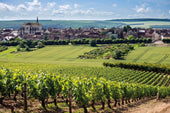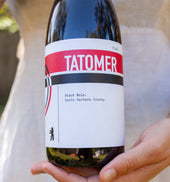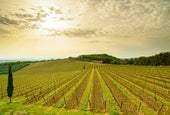
The Case for Drinking Quality Wine

An enthusiast’s wine appreciation encompasses a wide variety of activities beyond merely consumption. Wines are paired with food, compared side-by-side with other bottles of the same varietal and shared and discussed with friends. Enthusiasts may join a wine club (or several). Their wine appreciation becomes wine education because the more they learn the more they enjoy their wines. Enthusiasts embrace a wine-inclusive lifestyle, and they owe it to themselves to enhance that lifestyle with each wine experience.
However, the process of wine education includes some real let-downs. This blog isn’t about how to avoid those marginal wines — this is about why one should avoid them.
Life is too short to drink bad wine: Goethe may have said it best, but every wine enthusiast’s definition of “good” is different. Some base it on Wine Spectator or Robert Parker ratings, and that’s a great starting place. An aspiring enthusiast is learning (or may already know) what components they like in a wine: sweetness, acidity, tannins and alcohol, whether it’s full-bodied or light-bodied, red or white. As one experiences new wines, they owe it to themselves to explore quality wines that balance these flavors for their optimal enjoyment.
Wine is Food. Monica Yu, Plume Ridge Wine Buyer, is very philosophical about her approach to selecting the wines Plume Ridge Bottle Shop offers. In her view, wine is an integral part of a meal, not an afterthought. Just as dedicated cooks source top quality seasonal ingredients for the best presentation of a meal, wine should be selected in a similar way. Monica curates the selection at Plume Ridge Bottle Shop with that in mind.
Quality ≠ Price: High quality wines need not be prohibitively expensive. A well-made wine has much going for it: small production in French oak, hand harvesting, a specific wine AVA or AOC, premium grape sourcing, and quality packaging and closures to secure and preserve the product. What, then, accounts for a price differential between two wines of similar quality from the same region – say, Napa Valley? A lot of it comes down to marketing and distribution: to gain name recognition, wines from renowned regions invest in national marketing campaigns and sales staff. Their regional distributors get a cut for placing their wines in retail locations. Often, the consumer makes up the difference.
To discover quality and value, nothing beats a bottle shop where the buyers have developed and maintained personal relationships with wineries throughout the world. They have an advantage when it comes to recognizing a good value wine. “We try to provide wines that we’ve found along the way and deliver them at the best price possible,” says Monica.
Many Hands Make Better Wines: Smaller, family-owned wineries can often offer very good quality and value, especially in famous wine regions. The hands-on approach to cultivating, harvesting and crafting the wine is an additional benefit. An excellent example of this is the Maldonado Family Vineyards Napa Valley Blend. This cab/merlot/syrah blend is handcrafted start-to-finish in a family-owned winery and has a very approachable price.
Sustainability means Quality and Value. Wines labeled as sustainable, organic, or biodynamic offer very good quality. There are numerous types of sustainable wine certifications with more coming each year. Achieving and maintaining certification requires time and money, because chemicals and mechanized practices are often replaced with hands-on labor. Such intense focus on each stage of the growing and winemaking practice yields higher quality wines. Ironically, sustainable wines are often less costly than their cohorts. Years ago, when the first organic wines were produced, quality was patchy and consumers became wary. Wine produced with organic or eco-friendly practices may not tout the certification on the label; either because of this consumer ambivalence, or because the winery’s sustainable practices cannot meet the extremely stringent (and expensive) requirements for label certification.
In part because of these regulatory hurdles, sustainable and organic wines consistently receive higher ratings. Analyses of wine ratings published in the last few years indicate that wines labeled as organic or biodynamic consistently score higher. Plume Ridge Bottle shop offers many choices in sustainable wines, both domestic and imported. For example, the Bordeaux estate of Chateau Lacaussade practices sustainable farming and is converting to all organic. Their 92-point (Decanter) Chateau Saint-Martin “Trois Moulins” has handcrafted balance at a very affordable price of $14.99.
Wine Drinking Tradition: Drinking quality wine provides a connection to a millennia-long heritage of winemaking. Unsurprisingly, small wineries with decades of growing experience deliver that connection with high quality and excellent value. Plume Ridge offers a package of three wines from a French Chateau in Bordeaux with a 380-year old tradition of winemaking. Currently run by three generations of women, Chateau de l'Engarran produces excellent organic wines from the often-undervalued Languedoc region in France.
Why Drink Quality Wine? The je ne sais quoi (I do not know what). A true wine enthusiast appreciates the intangibles of the tasting experience. Consuming a mass-produced inexpensive wine versus a quality handcrafted vintage is like listening to an MP3 on your smartphone instead of a live orchestra. For an aficionado, a good quality wine is a symphony in a glass.
 Patty Lyn Tweten is a writer, graphic designer and vineyard owner. She is also a devoted fan of rosés having helped her husband make their own with the sagniée method. Instagram Linkedin
Patty Lyn Tweten is a writer, graphic designer and vineyard owner. She is also a devoted fan of rosés having helped her husband make their own with the sagniée method. Instagram Linkedin


















































